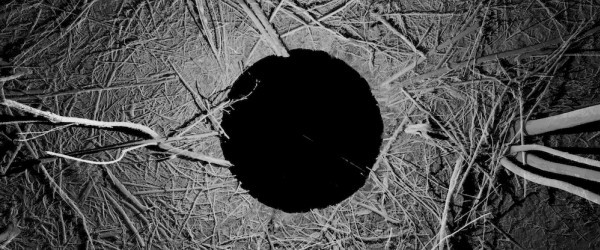Memory Lane

Introduction by Yves Bernard
Memory Lane is an audiovisual installation that explores the themes of memory and territory. The places we frequented in our childhood have marked and helped shape us, and their common typology (beach, sea, fields, woods, countryside, mountains etc.) form part of our collective unconscious. They conceal both unique memories of our own individual experiences as well as all the potential fictions they may have generated.
Today the storage of our memory is entrusted to the cloud, delocalised while at the same time being embedded in the massive distributed infrastructures of inaccessible data centers. For iMAL, Memory Lane forms part of a reflection on this strong link between memory and territory, raising a question about the control and relocation of our data.
In order to be able to portray these sites situated along the coast of Asturias (Spain), the two artists used a topographic laser scanner, allowing them to obtain an image in 3 dimensions with a 360-degree view of an entire site. They have succeeded in making an extremely detailed digital capture of the landscapes of their childhood and adolescence. This capture, resulting from the panoptic launch of the laser beam through its full sphere of vision, is not a single photograph but the potential source of an infinite number of photographs (or videos or sculptures). This machine's 'vision' process generates a cloud comprising millions of points in space resulting from the meeting between the laser beam and the elements of the landscape, an immense mass of data, a matrix whose tangible representations do not yet exist. They have yet to be imagined and constructed.
Here there is a paradox: a new device that allows the recording of a place with a previously unattained degree of accuracy and completeness, but that doesn't produce a representation but just a numerical abstraction. It is this work, namely of constructing visible representations, that Felix and Iñigo have undertaken. Starting from this hyper-realistic capture of the sites, they devised the chain of algorithmic processing of this data matrix in order to be able to derive printed images ('photographs'), video animations ('cinematographies') and a levitating object ('sculpture') from it. Their artistic propositions go beyond the simple rendering of a unique reality to return under new aesthetic forms to the archetypes of the places of our memories. In spectral black & white the clouds of dots reveal the elements of the landscape in the midst of the darkness, hiding what we cannot see, what we can imagine.
There is a second paradox: however sophisticated it may be, this 'vision' machine is imperfect, it does not capture everything since, in order to be able to record the territory, it has to be in position. Its physical presence in space prevents it from recording the ground it covers. Hence there is a dead zone, a black hole rather like the blind spot of the human eye (the Mariotte spot, where the optic nerve is connected to the retina). The artists do not try hide it from us. The black circle is clearly visible, because this machine is a new entity, an alien landing in a world, modifying the perception and at the same time opening it up. Here we find a typical facet of the work of Felix Luque (as in Chapter 1, Nihil ex Nihilo): how the machine, through its intrusion, becomes a generator of our new visions, opening the potential for new fictions. And, in response, the artists propose a machine from amongst the audiovisual components of Memory Lane: the one which moves the sculpted rock by means of levitation. But, unlike the mysterious laser scanner, the device of movement and electromagnetic levitation is very legible, revealed, an animated sound sculpture whose programmed behaviour is to be contemplated.
Memory Lane becomes a magical place: its visual and sculptural elements creating a landscape to be explored within the exhibition space, the multiple overlaps caused by the perceptual meanderings of the visitor are unpredictable, the rock floating infront of the slowly-travelling landscape, the mesmerising soundscape...
For this exhibition at iMAL, Memory Lane has been enhanced through the addition of a completely new component, Bois Mort (Snag), a light and sound sculpture, helping again to transport the visitor into the mysterious territories of our memory.
April 21 - May 22
Wed - Sun, 13:00 - 18:00
Drink / Nocturne
Friday May 13
18:00 - 21:00
Facebook event
Guided tour for kids, by the artists
Sunday May 15
15:00 - 17:00
Facebook event
Free entrance!
Group visits
+32-2-410 30 93
info@imal.org
Location: iMAL
Quai des Charbonnages 30 Koolmijnenkaai
1080 Brussels
Health Warning: due to the strong magnetic field, this exhibition is forbiden to visitors wearing pacemaker or other electromagnetic sensitive health devices.
Downloads
An archive : 1999-2010-2019
This page is an archive of the iMAL website that operated between 2010 and 2019. It compiles activities and projects made since 1999.
For our most recent news and activities, please check our new website at https://imal.org
